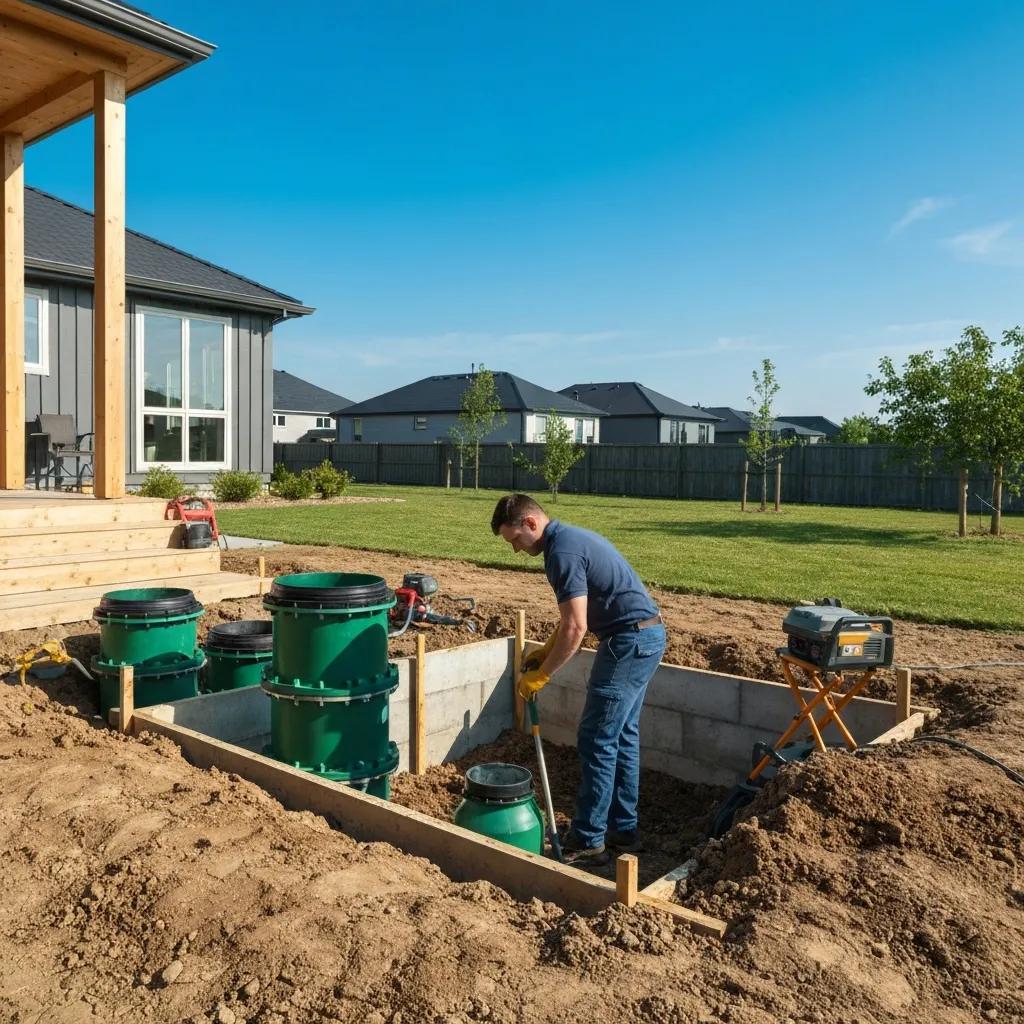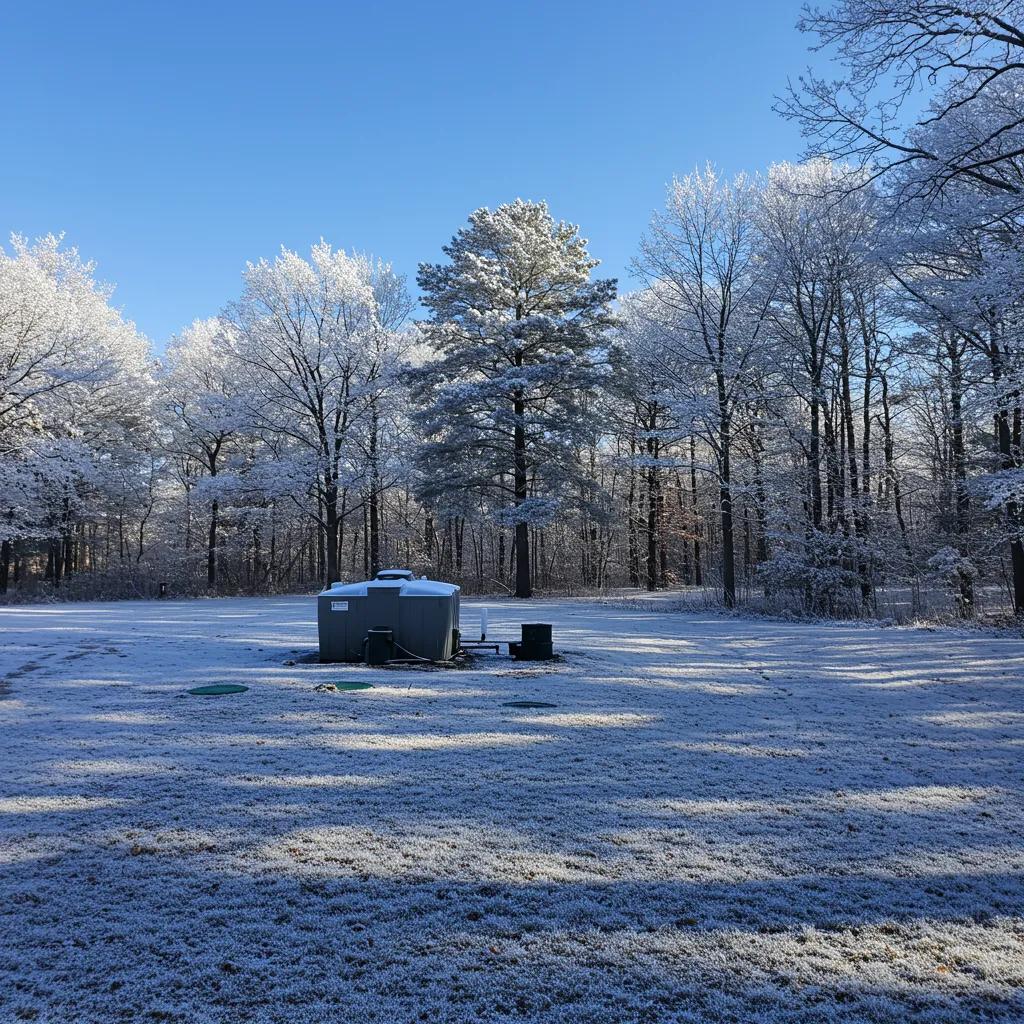Acworth’s autumn rains and dropping temperatures can strain on-site wastewater treatment, making proactive fall septic maintenance essential to prevent frozen pipes, drain-field saturation, and costly backups. Homeowners and businesses benefit by scheduling inspections, pumping, and protective measures that safeguard system longevity and performance.
This guide covers why fall septic maintenance matters in Acworth’s climate, the key preparation steps, common trouble signs, smart monitoring options, local service advantages, optimal scheduling, and preventative strategies to keep your septic system in peak condition. With practical advice and links to professional services, you can ensure a worry-free winter for your septic infrastructure.
Avoid Holiday Headaches with Fall Septic Maintenance
Why Is Fall Septic Maintenance Crucial in Acworth, GA?
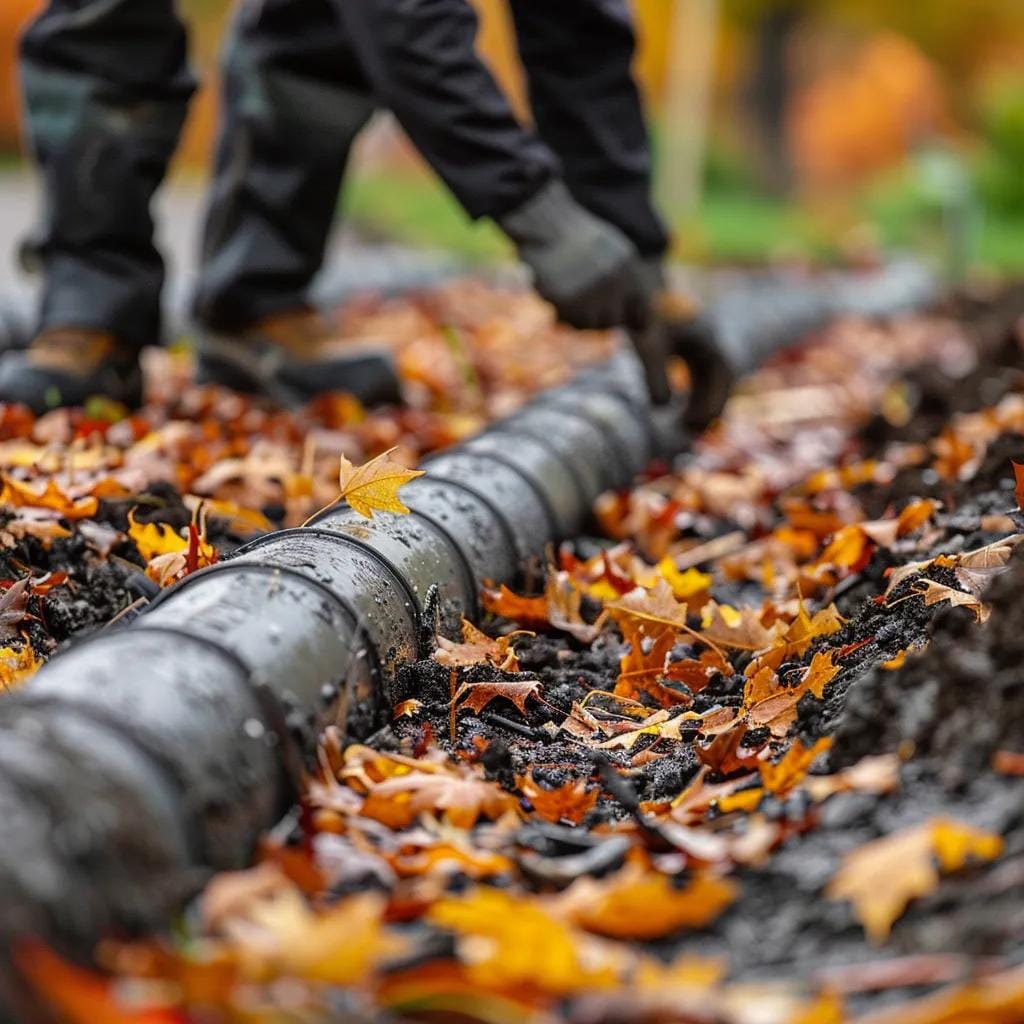
Maintaining your septic system in the fall is essential in Acworth, where cooler temperatures and seasonal rains can strain both treatment and dispersal processes. As the air chills, the beneficial bacteria that break down solids inside the tank slow their activity, allowing sludge and scum layers to grow thicker. At the same time, autumn storms can oversaturate the drain field, reducing the soil’s ability to absorb treated wastewater. Without proactive care—inspections, pumping when needed, and keeping debris clear—you risk backups, foul odors, and costly repairs just as winter approaches.
Effects of Cooler Weather and Increased Rainfall
As soil temperatures drop, bacterial breakdown of organic waste inside the tank becomes less efficient. Solids accumulate faster, pushing effluent levels upward and increasing the likelihood of carryover into the drain pipes. Heavy rainfall compounds the problem by filling pore spaces in the drain field’s soil, where effluent normally percolates. When those pathways are waterlogged, wastewater can pond on the surface or back up into plumbing fixtures. The combined slowdown in biological treatment and reduced soil absorption highlights why fall is the ideal time for a thorough septic check.
Impact of Fallen Leaves on System Components
Autumn leaves drifting across the yard often collect around septic lids, inspection ports, and vent pipes. If vents become blocked, air cannot flow freely through the system, leading to uneven distribution of effluent and potential clogging of drain lines. Leaves that settle into distribution boxes or pipes can form physical barriers, forcing untreated wastewater into unwanted areas and increasing stress on the entire system. Regularly clearing foliage around all access points ensures that both routine inspections and emergency pumping can proceed without obstruction.
How Soil Moisture Levels Affect Drain Field Performance
The drain field relies on unsaturated soil to filter and disperse treated effluent safely. Under moderate moisture, the ground slows effluent percolation but continues to function normally. When rainfall becomes heavy and soil nears saturation, water cannot move downward quickly enough, causing wastewater to pool on the surface. If the ground remains soaked—especially on clay-rich soils common in this region—the field loses its ability to absorb effluent altogether. In extreme cases, the only remedy is to divert water away from the field and wait for the ground to dry before the system can operate effectively again.
Impact of Soil Saturation on Drain Field Functionality
Soil saturation significantly impacts drain field functionality, with moderate saturation slowing effluent dispersal and high saturation leading to surface pooling and potential system failure. Extreme saturation prevents effluent absorption, necessitating immediate intervention to prevent damage.
What Are the Key Steps for Fall Septic System Preparation?
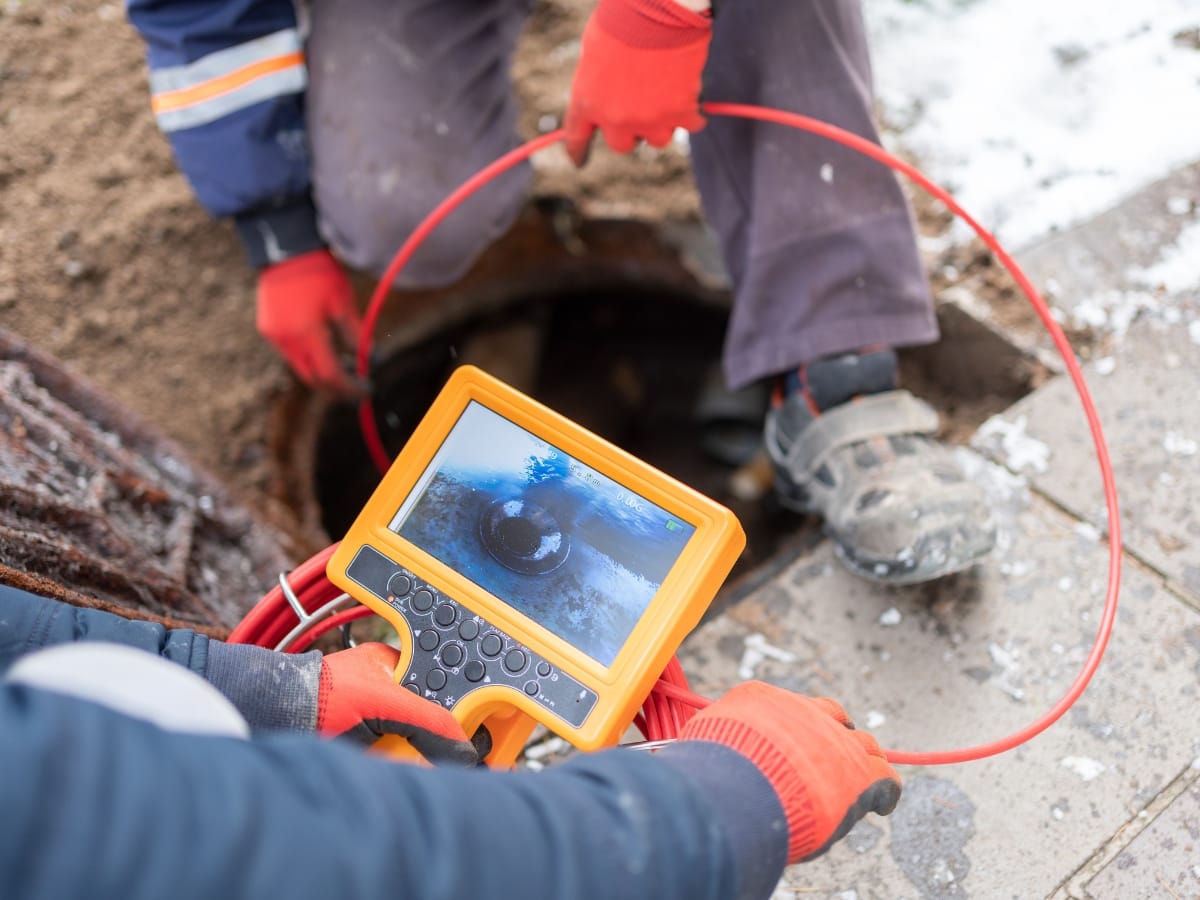
Preparing your septic system for winter in Acworth involves a series of deliberate steps that protect both the tank and the drain field from cold-weather damage and oversaturation. By inspecting and pumping the tank, safeguarding the absorption area, checking pipes and components, and managing water use, homeowners can prevent common failures like frozen lines, backups, and surface effluent pooling. A well‐maintained system entering the colder months operates reliably and avoids costly emergency repairs.
Inspecting and Pumping the Septic Tank
Begin with a thorough inspection to assess sludge and scum levels. A trained technician opens all access lids, measures the depth of solids, and determines if the tank requires pumping. Removing accumulated sludge and rinsing tank walls restores full capacity and keeps effluent moving freely into the drain field. During this process, the technician checks inlet and outlet baffles for blockages or damage, ensuring wastewater flows in the correct direction. Most households benefit from septic pumping every three to five years; larger families or heavy water users may need services more often. Completing this step before freezing temperatures arrive ensures the tank has room for winter inflows and reduces the risk of solids carry‐over into the distribution box.
Protecting the Drain Field
Once the tank is clean, turn your attention to the absorption area. Avoid driving or placing heavy equipment on the field, as compaction reduces soil permeability and worsens pooling. Spread 4 to 6 inches of straw or wood‐chip mulch over exposed ground to insulate shallow distribution pipes and prevent frost heave. Redirect roof and surface runoff by extending downspouts and grading soil away from the drain field, keeping excess water from saturating the area. Maintaining a healthy grass cover—mowed to about 3 inches—helps strengthen root systems that naturally stabilize the soil without impeding effluent flow. Where wind exposure is high, installing shrubs or a low fence along the field’s edge can serve as a windbreak, further reducing freeze risk.
Checking Pipes and System Components
Inspect all visible pipes, pumps, and access ports for signs of cracks, corrosion, or misalignment. Cracked inlet or outlet pipes allow solids to escape or block effluent flow, so any damage must be addressed before temperatures drop. Confirm that effluent filters are clean or replaced, preventing solids from entering and clogging the soil. Wrap exposed sections of pipe and inspection ports with rigid foam insulation or approved heating tape to keep them from freezing. A component check identifies vulnerabilities that, if left unattended, can lead to frozen blockages and discharge failures.
Managing Water Usage
As bacterial activity slows in cooler soil, the system’s ability to process wastewater declines. To avoid overloading, fix dripping faucets and running toilets promptly, preventing unnecessary inflow. Spread laundry loads over multiple days rather than completing all washes in a single session. Installing low‐flow showerheads and faucet aerators reduces overall water volume per use. Avoid pouring fats, oils, or heavy cleaning chemicals into drains, as these substances can form scum layers that exacerbate winter blockages. By conserving water, you balance inflow with reduced treatment capacity, keeping effluent levels below critical thresholds.
What Are the Common Signs of Septic System Trouble in the Fall?
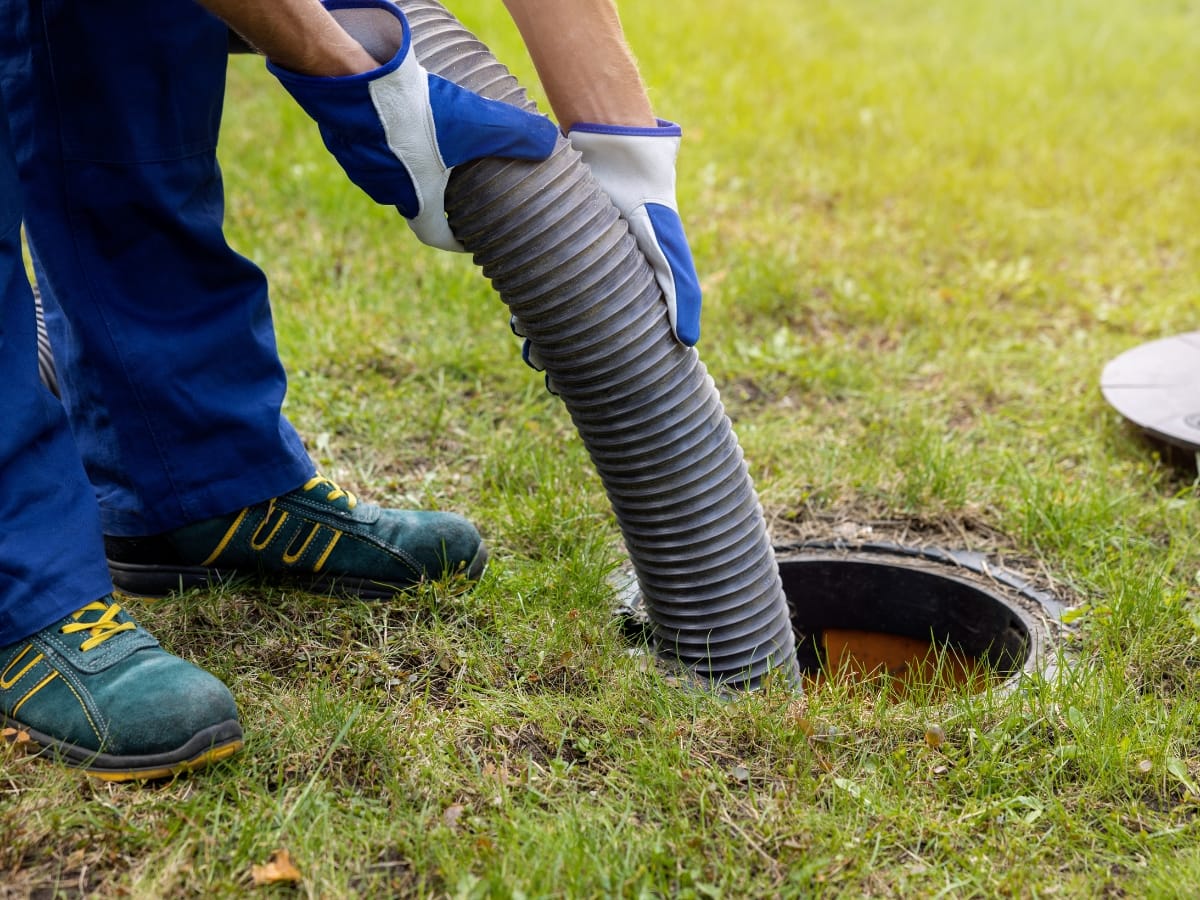
Identifying septic trouble early in the fall can save you from costly repairs and winter emergencies. As cooler weather slows bacterial activity and autumn rains saturate soil, even minor system issues can escalate quickly. By watching for three key warning signs—slow drains and odors, wet patches or unusually lush grass, and unexpected backups—you can address problems before freeze‐up complicates repairs.
Slow Drains and Persistent Sewage Odors
When sinks, tubs, or toilets begin to drain more slowly than usual, wastewater may be struggling to pass through clogged pipes or an overburdened drain field. You might also hear gurgling noises as trapped air struggles to escape through water in the traps. If those sounds coincide with a foul, sewage-like smell inside your home—often noticeable near drains or vents—it means gases are backing up from untreated effluent.
Outdoor odors around the septic tank or distribution box are equally concerning; they signal that wastewater is lingering too long before soaking into the ground. These symptoms warrant a prompt inspection to clear blockages and restore normal flow before solids carry over into the drain field.
Wet Patches, Pooling Water, and Lush Vegetation
A functioning drain field disperses treated effluent beneath the surface, where soil microbes break it down and plant roots take up moisture. When the ground above the field becomes saturated—either from rain runoff or excessive inflow—water will rise to the surface. This results in soggy spots or standing puddles that do not dry out, even in full sun.
You may also notice grass patches that are greener and thicker than the surrounding turf, fed by nutrient-rich effluent escaping through shallow soil. If these wet areas appear over the tank’s lids or around distribution laterals, they indicate soil compaction, clogged pipes, or insufficient absorption capacity. Failure to correct these conditions can lead to surface discharges of untreated wastewater and environmental contamination.
Unexpected Backups and Surface Discharges
In more severe cases of system failure, effluent has nowhere to go except back up into the plumbing. You might see wastewater rising in toilet bowls or pooling around floor drains. Grease and solids may force their way into sinks, resulting in visible residue or sludge deposits. Outdoors, raw sewage can appear near access lids or at low spots adjacent to the drain field. These dangerous backups pose health risks, create unpleasant odors, and demand immediate professional intervention—especially before freezing temperatures turn liquid waste into obstructive ice.
Taking Action Before Winter Sets In
At the first sign of trouble—slow drainage, odors, wet spots, or backups—arrange for a qualified septic technician to evaluate your system. They will check sludge and scum levels, clean or replace filters, inspect baffles, and examine both inlet and outlet pipes for damage.
Pumping the tank when solids exceed safe levels restores capacity and prevents solids from entering the absorption system. Technicians can also test soil percolation rates and repair or replace distribution components as needed, then recommend surface grading or runoff diversion to protect the field from excess water.
How Do Smart Septic Systems Enhance Fall Septic Maintenance?
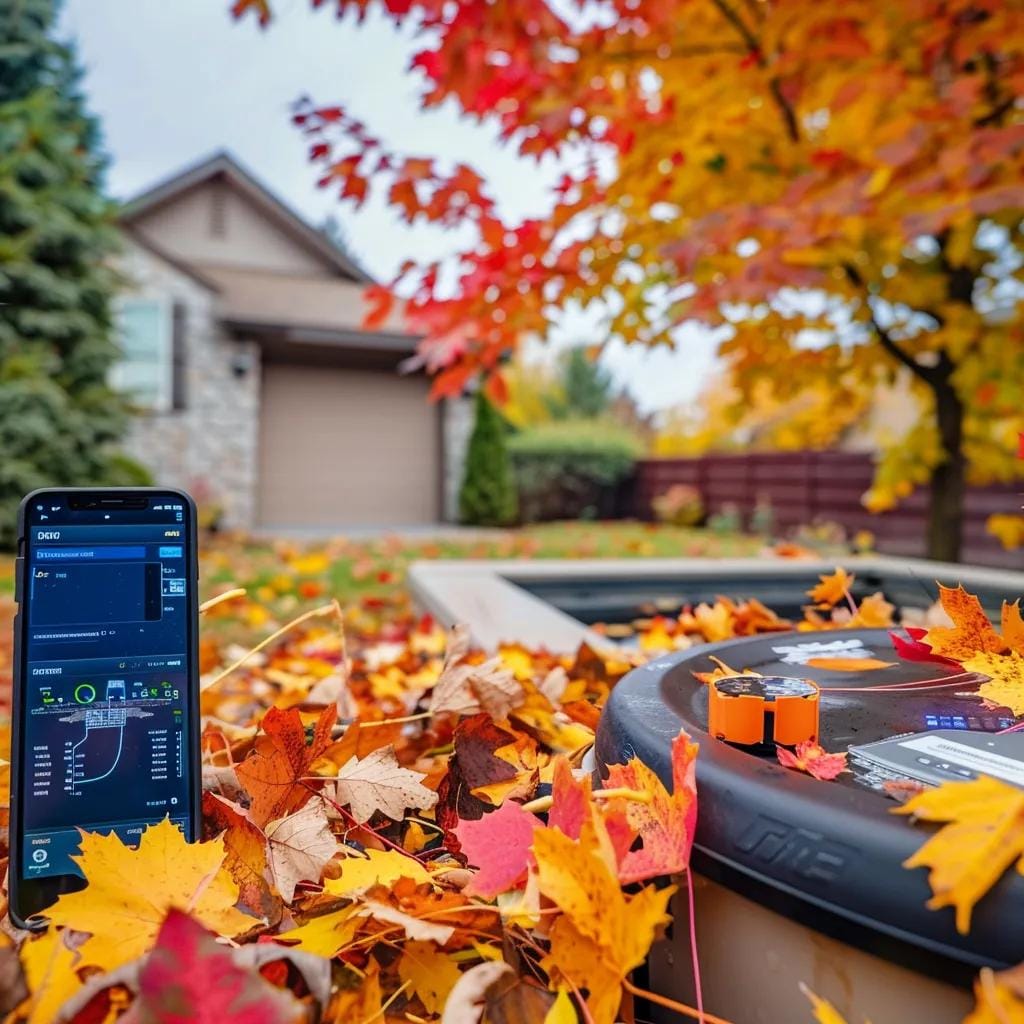
Smart septic systems add a layer of protection to your home’s wastewater treatment by using sensors and analytics to track system performance throughout the year. Unlike conventional maintenance schedules, which rely on fixed pumping intervals, these systems provide real‐time insights into tank levels, soil conditions in the drain field, and even temperature changes that can signal imminent issues. By monitoring key indicators continuously, homeowners gain the ability to address minor concerns before they become costly emergencies—especially important as fall’s cooler weather and heavier rains strain septic components.
Benefits of IoT Sensors in Septic Tanks and Drain Fields
Equipping a septic tank and distribution box with Internet-connected sensors transforms how you care for your system. Instead of guessing whether solids have built up to the point of needing a pump‐out, you receive data on scum and sludge thickness.
Flow meters record how quickly effluent enters and leaves the tank, revealing abnormal surges that may follow extreme rainfall or appliance leaks. Mobile alerts notify you when levels exceed safe thresholds, so you can arrange service exactly when it’s needed. This targeted approach reduces unnecessary pumping visits and prevents solids from entering the drain field, a common cause of premature field failure.
Preventing System Failures Through Continuous Monitoring
Real‐time data does more than track how full the tank is. Temperature sensors detect when water inside pipes or inspection ports drops near freezing, enabling you to add insulation or heat tape before lines crack. Early warning of slow drainage or uneven distribution can point to blocked pipes or root intrusion. By catching slow‐moving problems early, you can schedule corrective actions—cleaning, baffle inspection, or pipe repair—long before backups or surface effluent occur. This level of vigilance keeps the system healthy across fall’s transition from warm, active soil biology to the dormant winter months.
Leveraging Predictive Maintenance for Cost Efficiency
Over time, smart systems collect a wealth of operational data that can be used to forecast maintenance needs. Historical trends in sludge accumulation, effluent flow rates, and seasonal rainfall patterns feed predictive models that recommend optimal pumping dates and component checks.
Rather than booking a service every three years as a rule of thumb, you follow a schedule that aligns with your system’s actual wear. This precision not only cuts down on unnecessary service calls but also protects the drain field by ensuring solids never carry over. Predictive maintenance also guides when to add leaf guards, adjust landscaping runoff, or apply mulch insulation for winter protection.
Integrating Smart Data Into Routine Fall Care
During autumn, combine sensor feedback with visual inspections. If the system reports rising effluent levels following a heavy rain, redirect gutter downspouts and regrade soil to prevent saturation. If temperature readings dip sharply at night, cover exposed pipes or inspection ports. Sensor‐driven insights allow you to fine‐tune every aspect of fall preparation—from pump‐out timing to drain‐field shielding—rather than relying on generic checklists. The result is a resilient septic system that weathers seasonal shifts with minimal risk of backups, odors, or frozen damage.
How Often Should You Schedule Fall Septic Maintenance and Pumping?
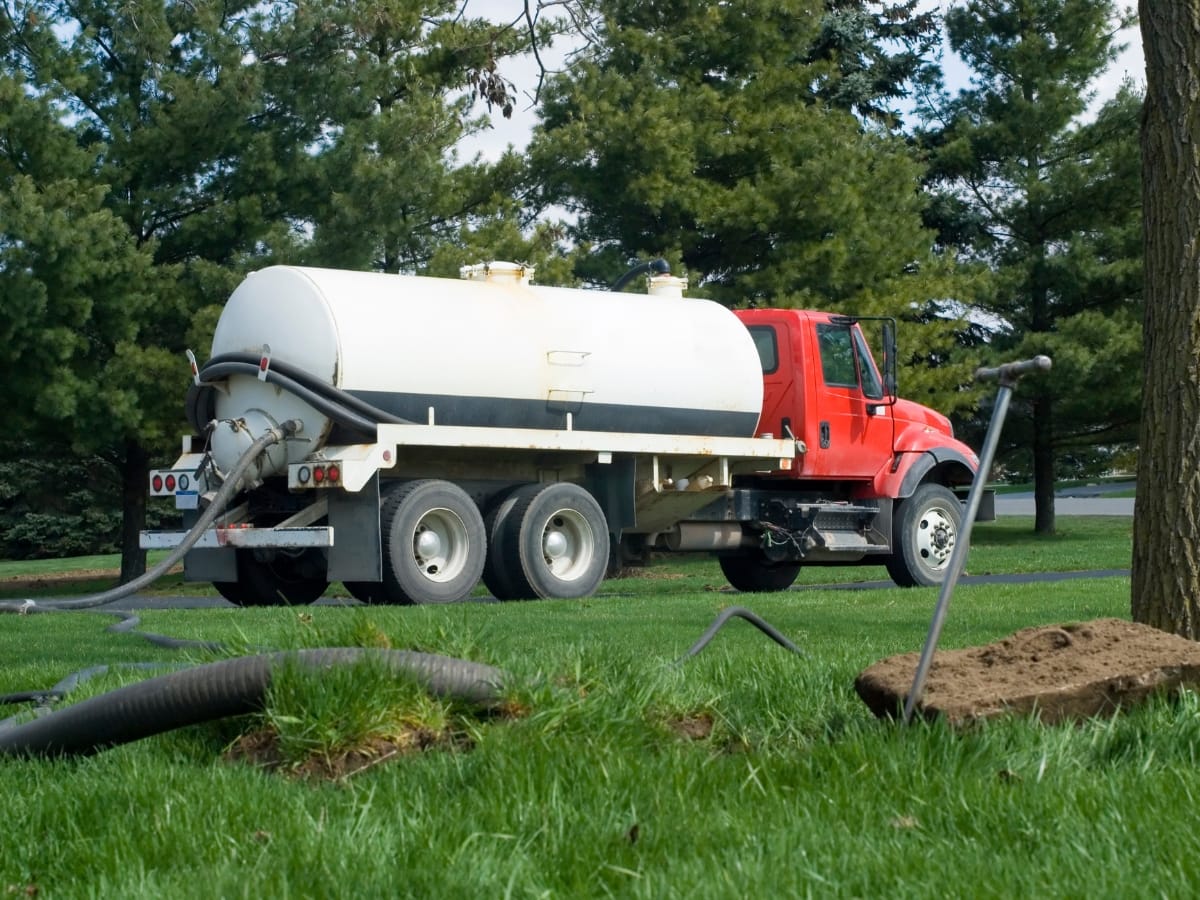
Determining the right interval for fall septic maintenance requires weighing tank capacity, household water use, and any advanced monitoring systems in place. In Acworth, a one-size-fits-all approach can leave smaller families over-serviced or larger households at risk of backups. By tailoring your schedule to the specifics of your system and usage, you protect both your property and your budget.
Recommended Pumping Intervals by Tank Size
Most residential tanks in the 500 to 1,000-gallon range perform reliably with a pump-out every three to four years under normal water use. When household size grows—pumping volume increases and solids accumulate more quickly—larger tanks of 1,000 to 1,500 gallons should be serviced every two to three years. Commercial installations or homes with septic-fed irrigation may face even higher demands and benefit from annual or semiannual level checks.
Household Factors That Influence Frequency
The number of occupants represents the primary driver of wastewater volume. A family of five typically generates enough solids and scum to warrant pumping every two years, whereas a couple or single resident can often extend maintenance to four years without risk. Secondary water-usage habits—such as frequent laundry loads, home-based businesses, or high-flow appliances—also accelerate tank fill rates. Take stock of any lifestyle changes each fall to adjust your maintenance calendar appropriately.
Incorporating Smart Monitoring Technology
Homes equipped with real-time sensors or flow meters gain a more precise picture of system health. Instead of relying on a fixed schedule, sensor data allows you to call for a pump-out exactly when sludge and scum levels approach critical thresholds. This predictive approach reduces unnecessary service calls and ensures the tank never carries excess solids into the drain field. When paired with seasonal inspections, smart systems let you fine-tune maintenance intervals—sometimes extending them by a year or more for low-use households, or shortening them ahead of heavy-use seasons.
Cost Elements of Fall Septic Service
Pumping costs depend first on tank size and access complexity. A 500-gallon residential pump-out in Acworth usually ranges from $250 to $350, while larger tanks can exceed $400. If technicians must navigate landscaping or remove concrete lids, labor charges increase. Adding routine components—like filter cleanings, baffle inspections, or minor pipe repairs—carries modest fees that often save money by preventing bigger issues. Permitting requirements for commercial properties or new sensor installations incur their own expenses, as do emergency or after-hours call-outs.
Maximizing Value Through Strategic Scheduling
By aligning fall maintenance with the end of heavy rain seasons and before hard freezes, homeowners minimize field saturation and frozen-pipe risks. Scheduling combined inspections and sensor system checks during a single visit reduces travel fees. Households that group pump-outs with routine plumbing or landscaping services can sometimes negotiate package discounts. Ultimately, a data-driven, usage-based approach delivers the best balance of reliability and cost efficiency.
What Are Preventative Measures to Avoid Fall Septic System Problems?
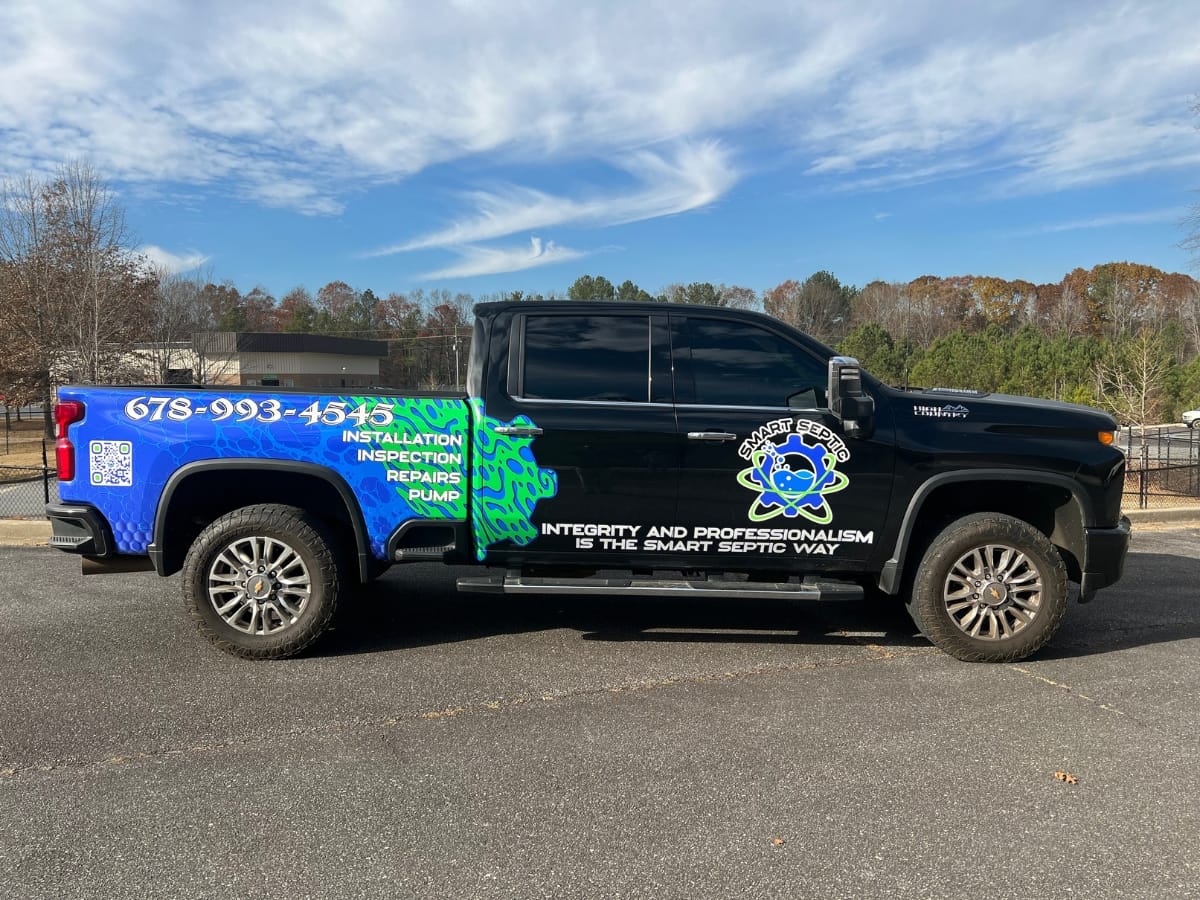
Preventing fall septic problems starts with simple measures that protect both the tank and the drain field from cold weather stresses and excess moisture. By directing surface water away, insulating vulnerable areas, and managing traffic and vegetation, you reduce the risk of backups, frozen pipes, and field failures. A proactive approach extends the life of your system and keeps it working smoothly through winter.
How Can You Prevent Drain Field Saturation and Freezing?
Keeping the drain field dry is crucial in autumn. First, ensure that roof runoff and surface water flow away from the field by regrading soil or adding shallow swales. Downspout extensions that deposit rainwater several feet from the field reduce soil saturation. Spreading a 4 to 6-inch layer of straw or wood-chip mulch over the lateral lines adds insulation against overnight freezes. For more robust protection, install a non-woven geotextile fabric above shallow distribution pipes before mulching. This layer helps hold mulch in place, prevents soil migration into pipe trenches, and enhances thermal buffering so frost penetrates less deeply.
Why Should You Avoid Driving Over the Drain Field in Fall?
Vehicle and equipment traffic compacts soil, squeezing out the air spaces that normally absorb effluent. Compacted ground holds water longer, increasing the chance of surface pooling and freeze damage once temperatures drop. Heavy weight can crush or shift shallow pipes, leading to misaligned laterals and uneven flow. Restricting all motorized traffic—lawn mowers, ATVs, even garden carts—keeps the soil structure intact, preserves natural percolation rates, and prevents costly pipe repairs.
How Does Proper Landscaping Support Septic System Health?
Choosing the right plants and maintaining ground cover plays a major role in long-term field performance. Opt for shallow-rooted grasses or low-profile ground covers that stabilize soil without threatening pipes. Avoid deep-rooted trees or shrubs near the field; roots searching for moisture can infiltrate and clog laterals. Regularly mow the field to a moderate height of three to four inches, which encourages healthy grass growth and allows oxygen exchange without compaction. Minimizing landscape irrigation and directing sprinklers away from the field prevents over-watering, while periodic weeding removes invasive species that could disrupt the drain field’s delicate filtration balance.
Frequently Asked Questions
What Should I Do If I Notice Unusual Odors Around My Septic System?
If you detect foul odors near your septic system, it may indicate a problem such as a blockage or a failing system. These odors can arise from gases escaping due to insufficient treatment or a saturated drain field. It’s crucial to address this issue promptly by contacting a professional septic service. They can conduct a thorough inspection to identify the source of the odors and recommend necessary repairs or septic maintenance to restore proper function.
How Can I Tell If My Septic System Needs Pumping?
Signs that your septic system may need pumping include slow drains, gurgling sounds in pipes, and sewage odors. Additionally, if you notice wet spots or lush vegetation over the drain field, it could indicate that effluent is surfacing due to a full tank. Regular inspections can help determine sludge levels, but if you observe any of these symptoms, it’s wise to schedule a pumping service to prevent backups and system failure.
What Are the Risks of Neglecting Fall Septic Maintenance?
Neglecting fall septic maintenance can lead to severe consequences, including frozen pipes, drain field saturation, and costly backups. Without proper care, the system’s efficiency diminishes, increasing the risk of environmental contamination and health hazards. Additionally, emergency repairs can be significantly more expensive than routine maintenance. By prioritizing fall septic maintenance, you can ensure your septic system operates smoothly throughout the winter months.
Can Heavy Rainfall Affect My Septic System’s Performance?
Yes, heavy rainfall can significantly impact your septic system’s performance. Excessive rain can saturate the soil around the drain field, limiting its ability to absorb effluent. This saturation can lead to surface pooling, odors, and potential backups. To mitigate these risks, it’s essential to ensure proper drainage around your septic system and consider scheduling maintenance before heavy rain seasons to prepare your system for increased water flow.
What Should I Do If My Septic System Fails During Winter?
If your septic system fails during winter, it’s crucial to act quickly. First, avoid using water to prevent further strain on the system. Contact a professional septic service immediately to assess the situation. They can diagnose the issue, whether it’s a frozen pipe or a more severe failure, and recommend appropriate repairs. Quick action can help minimize damage and restore your system’s functionality.
How Can I Maintain My Septic System Between Professional Services?
Between professional services, you can maintain your septic system by monitoring water usage, fixing leaks promptly, and avoiding flushing non-biodegradable items. Regularly check for signs of trouble, such as slow drains or odors, and keep the area around your septic system clear of debris. Additionally, practicing water conservation can help reduce the load on your system, ensuring it operates efficiently until the next scheduled septic maintenance.
What Are the Benefits of Using Smart Technology for Septic Maintenance?
Smart technology enhances septic maintenance by providing real-time monitoring of system performance. IoT sensors can track tank levels, detect leaks, and alert homeowners to potential issues before they escalate. This proactive approach allows for timely interventions, reducing the risk of system failures and costly repairs. Additionally, smart technology can optimize septic maintenance schedules based on actual usage, ensuring your septic system remains in peak condition throughout the year.
Why Is Winterizing My Septic System Important in Acworth?
Winterizing adapts your system to colder conditions, preventing frozen pipes and impaired bacterial activity. Proper insulation and timely pumping ensure uninterrupted treatment and avoid emergency freeze-thaw damage.
Can I Perform Fall Septic Maintenance Myself?
While homeowners can clear leaves and monitor water use, professional inspections, pumping, and component checks require specialized equipment and expertise. Certified technicians identify hidden issues and apply industry-approved methods.
What Are the Signs of a Failing Septic System in Fall?
Fall failure indicators include slow drains, sewage odors, wet or lush green spots over the tank or drain field, and gurgling in plumbing fixtures. Early detection allows for corrective septic maintenance before winter conditions worsen problems.
Conclusion
Fall is the perfect time to give your septic system the attention it needs before winter arrives. Proper septic maintenance now can prevent costly repairs and ensure smooth operation all season long. At Smart Septic Pros, we specialize in comprehensive septic care tailored to Acworth’s unique climate and soil conditions. Don’t wait for problems to arise—call us today at 678-993-4545 or fill out our contact form to schedule your fall septic maintenance service. Trust Smart Septic Pros to keep your system running efficiently, so you can enjoy peace of mind all year round.

